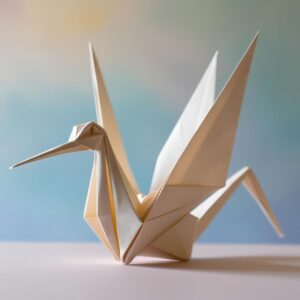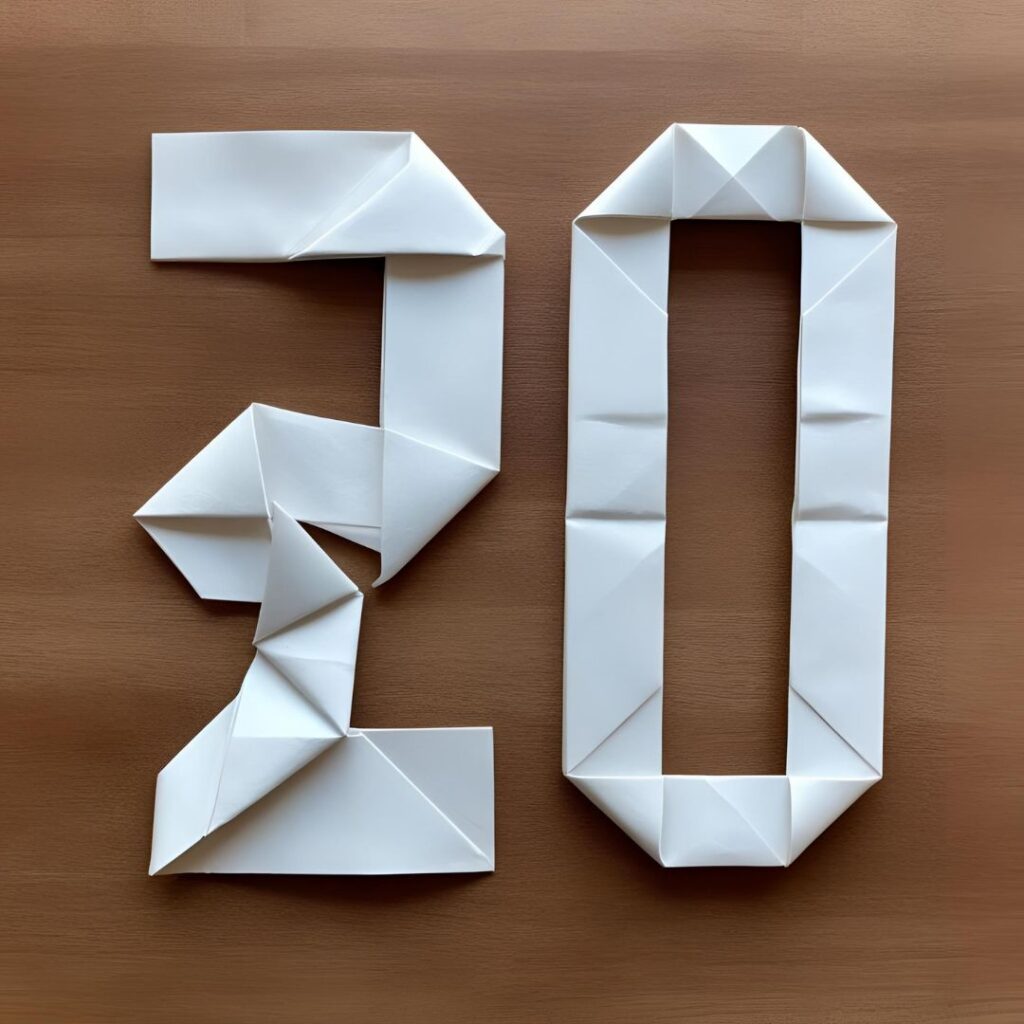Origami, the art of folding paper to create shapes and figures, is an ancient practice filled with technique and patience. With the advent of technology and artificial intelligence, new possibilities for this art have emerged. Combining sculptural origami with AI opens up a wide range of opportunities to innovate and push the limits of human creativity. What if you could transform your knowledge of origami, creating new models every day for a month, with the help of personalized AI suggestions? This post proposes an exciting 30-day challenge, where you’ll use artificial intelligence to improve your skills and generate new ideas for sculptural origami projects.
What is Sculptural Origami?
Sculptural origami is a branch of traditional origami that goes beyond creating simple shapes, exploring the three-dimensionality and complexity of the figures. In this style, artists create paper sculptures that can be extremely detailed, with multiple layers and interconnected structures. These sculptures are not only folded; they are sculpted, using advanced techniques that may involve cutting, creasing, and layering multiple sheets of paper.
While practicing origami can be a form of meditation for many, over time, it can become a challenge to generate new ideas and projects, especially when seeking to create something innovative and complex. The introduction of artificial intelligence into this process provides a powerful way to overcome these creative obstacles.


How Artificial Intelligence Can Boost Creativity in Origami?
Artificial intelligence (AI) has the ability to analyze patterns, learn from data, and provide accurate suggestions based on individual progress. When applied to origami, AI can help in several ways:
Personalized Suggestions Based on Your Skill Level
Each origami practitioner has a unique skill level and set of preferences. AI can analyze your previous creations and suggest projects that align with your style and ability. For example, if you’re a beginner in sculptural origami, AI can suggest simpler models, while an advanced practitioner might receive suggestions for more complex and innovative challenges.
Innovation and Experimentation with New Techniques
AI can offer new approaches to building sculptural figures, such as suggesting novel combinations of techniques and styles. It can identify origami elements you may not have thought to experiment with, challenging your skills and expanding your artistic vision.
Real-Time Adjustments to Perfect Your Creations
As you work on your origami model, AI can analyze your progress and suggest real-time adjustments. If a part of the sculpture isn’t working as expected, AI might propose an alternative technique or suggest changes in the folds to optimize the appearance and structure of the model.
Accelerating the Creative Process
Instead of spending hours trying to figure out the next step or model, AI can streamline the creative process by offering suggestions based on what you’ve already created. This allows you to focus more on execution than conception, using your time to refine your skills.
The 30-Day Challenge: How It Works
The goal of this challenge is to improve your sculptural origami skills and explore new creative horizons. Every day, you will be presented with new challenges, adjusted based on your skill level, and AI will provide suggestions for models, techniques, and adjustments to help you progress.
Day 1: Start with the Basics
The first day is dedicated to building a solid foundation. For beginners, AI will suggest simpler shapes, such as geometric folds or traditional origami figures. If you already have experience, you can start with a basic structure and delve deeper into techniques like creasing and layering to prepare your sculpture for the following days.
Day 2-7: Refining Basic Techniques
During the first week, AI will guide you in refining your basic skills and start exploring more advanced techniques, such as using multiple layers of paper. AI can suggest fold patterns and sculpture styles that are appropriate for your progress, allowing you to build the foundation for more complex figures, such as flowers or animals.
Day 8-14: Challenging Creativity
Now that you have a good understanding of basic techniques, the next step is to add complexity. During this week, AI may suggest more advanced models, such as figures with intricate details or more complex three-dimensional structures. You will be challenged to combine different techniques, creating models with greater depth and visual richness.
Day 15-21: Incorporating Innovative Elements
By the halfway point of the challenge, AI will start suggesting new ways to incorporate innovative elements into your sculptures. This could include using cuts to create fine details or exploring different paper textures. The goal here is to push your creative boundaries by combining traditional ideas with modern techniques.
Day 22-28: Refining and Perfecting
At this stage, AI will help you refine your skills by suggesting adjustments to make your sculptures even more detailed and precise. It might offer feedback on how to improve symmetry, texture, or complexity of the shapes. The focus will be on working on finishes and details, turning each piece into a masterpiece.
Day 29-30: The Grand Showcase
By the end of the 30-day challenge, you will have created a series of amazing sculptures, and AI may suggest ways to combine them into a cohesive set. These last two days will be dedicated to finalizing your sculptures and preparing for a virtual or physical showcase, where you can display your progress.
Why Participate in a 30-Day Challenge?
The idea of completing a 30-day challenge is to create a focused, disciplined routine where each day represents a new opportunity to learn and grow. This provides a structure that can help boost motivation and commitment, as well as allow you to measure your progress over time. AI serves as a supportive tool that enhances creativity and guides learning without stifling artistic freedom.
Additionally, by integrating AI into this process, you open up new possibilities to combine art and technology in a unique way. Instead of simply following origami tutorials, you’ll be creating something new every day, with the help of personalized suggestions, making the process more dynamic and exciting.
How AI is Shaping the Future of Origami
The combination of origami and artificial intelligence could redefine what’s possible within this art form. AI not only speeds up the creative process but also makes it more accessible to everyone, regardless of skill level. With the ability to adapt to each individual’s progress and preferences, it offers a more direct path to exploring complex and challenging techniques. The future of sculptural origami is becoming increasingly interactive, where both machine and human work together to create unique works of art.
This 30-day challenge is just the beginning. As you continue exploring and integrating new technologies like AI, you can keep expanding your boundaries and creating sculptural origami pieces that once seemed impossible.
Take this opportunity to improve, experiment, and most importantly, have fun creating new paper sculptures. What can you create with the help of artificial intelligence? The limit is your creativity!








